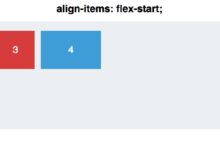Appraisal Based Real Estate Index: 7 Powerful Insights You Must Know
Ever wondered how real estate markets are truly valued beyond just listing prices? The answer lies in the appraisal based real estate index—a powerful tool that reveals the hidden truths behind property values. Let’s dive into what makes it so essential.
What Is an Appraisal Based Real Estate Index?
An appraisal based real estate index is a specialized metric used to track changes in property values over time by relying on professional appraisals rather than transaction prices. Unlike traditional indices that depend on sales data, this index uses independently assessed values, offering a more stable and less volatile picture of real estate market trends.
Definition and Core Concept
The core idea behind an appraisal based real estate index is to eliminate the noise caused by one-off sales, emotional bidding, or distressed transactions. Instead, it focuses on objective, third-party valuations conducted by licensed appraisers. These appraisals consider factors like location, condition, comparable properties, and market dynamics.
- Relies on certified appraiser assessments
- Excludes speculative or outlier sales
- Provides consistent valuation benchmarks
This approach ensures that fluctuations in the index reflect genuine shifts in market fundamentals rather than short-term anomalies.
How It Differs from Transaction-Based Indices
Most well-known real estate indices, such as the S&P CoreLogic Case-Shiller Index, are transaction-based—they track actual sale prices of homes over time. While useful, these can be skewed by timing, property mix, and market sentiment. In contrast, an appraisal based real estate index captures value at a specific point in time, regardless of whether the property sold.
“Appraisal-based indices smooth out volatility and offer a clearer long-term view of housing value trends.” — National Association of Realtors (NAR)
For example, during a housing boom, transaction prices might skyrocket due to bidding wars, but appraisals may rise more gradually, reflecting underlying fundamentals. This divergence makes appraisal-based data invaluable for policymakers, investors, and lenders.
Why Appraisal Based Real Estate Index Matters
The significance of an appraisal based real estate index extends far beyond academic interest. It plays a crucial role in financial stability, investment strategy, and risk management across multiple sectors of the economy.
Stability in Volatile Markets
One of the most compelling advantages of an appraisal based real estate index is its ability to provide stability during turbulent market conditions. When home prices surge or plummet rapidly, transaction-based indices can overreact. Appraisal data, however, tends to lag less dramatically because appraisers use conservative methodologies and adjust values incrementally.
- Reduces panic-driven market perceptions
- Helps prevent asset bubbles
- Supports more rational lending decisions
During the 2008 financial crisis, for instance, many transaction-based indices failed to predict the collapse because they were still reflecting inflated sale prices. Appraisal data, though slower to update, began showing downward trends earlier, signaling potential trouble ahead.
Use in Mortgage Lending and Risk Assessment
Lenders rely heavily on appraisals to determine loan-to-value ratios and assess credit risk. An appraisal based real estate index allows banks and mortgage providers to monitor collateral value trends across regions and property types. This helps them adjust underwriting standards proactively.
For example, if the index shows a sustained decline in suburban home values, lenders might tighten requirements for loans in those areas. Conversely, rising appraisal values could justify expanded lending programs. This predictive capability enhances systemic resilience.
Key Components of an Appraisal Based Real Estate Index
Building a reliable appraisal based real estate index requires careful design and execution. Several key components must be in place to ensure accuracy, consistency, and relevance.
Data Collection Methodology
The foundation of any appraisal based real estate index is its data collection process. This typically involves gathering appraisal reports from licensed professionals across a wide geographic area. Sources include mortgage refinancing appraisals, home equity loans, and portfolio valuations by financial institutions.
- Standardized appraisal forms (e.g., Uniform Residential Appraisal Report)
- Geographic coverage across urban, suburban, and rural markets
- Regular frequency of updates (monthly or quarterly)
To maintain integrity, data must be cleaned and normalized to remove inconsistencies—such as differences in reporting formats or non-arm’s length transactions.
Valuation Adjustment Techniques
Since appraisals occur at different times and for different purposes, statistical models are used to adjust for temporal and spatial variations. Hedonic regression is commonly employed to isolate the impact of specific property characteristics (bedrooms, square footage, age) and location factors.
This allows the index to compare “like with like” even when no two homes are identical. For example, if a newly appraised home has an extra bathroom compared to last year’s average, the model adjusts the value accordingly to reflect only market-wide changes.
“Without proper hedonic adjustment, an appraisal based real estate index would reflect changes in housing quality rather than pure price movements.” — Urban Institute Report
Major Players Using Appraisal Based Real Estate Index
Several institutions and organizations have developed or adopted appraisal based real estate index systems to inform policy, investment, and lending decisions.
Government Agencies and Central Banks
Central banks and housing authorities often use appraisal based real estate index data to monitor financial stability. For instance, the Federal Reserve incorporates appraisal trends into its macroprudential assessments of the banking sector. Similarly, the Office of the Comptroller of the Currency (OCC) uses such indices to evaluate real estate exposure in national banks.
- Monitors systemic risk in mortgage portfolios
- Informs interest rate and regulatory policy
- Supports early warning systems for housing bubbles
In Europe, the European Central Bank (ECB) has explored appraisal-based metrics as part of its House Price Index enhancements, recognizing their smoothing effect on volatile transaction data.
Private Sector Adoption
Private companies, especially in fintech and real estate analytics, are increasingly leveraging appraisal based real estate index frameworks. Firms like CoreLogic and Black Knight have integrated appraisal data into hybrid indices that combine transaction and valuation inputs.
These blended models offer a more nuanced view of market health. For example, CoreLogic’s Home Price Index now includes appraisal trends as a secondary validation layer, improving forecast accuracy during periods of low sales volume.
Additionally, real estate investment trusts (REITs) and private equity firms use appraisal indices to benchmark portfolio performance and guide acquisition strategies. A stable, long-term valuation metric helps justify holding assets through downturns.
Advantages of Using an Appraisal Based Real Estate Index
The benefits of relying on an appraisal based real estate index are numerous, particularly for stakeholders who prioritize accuracy and long-term planning over short-term signals.
Reduced Volatility and Smoother Trends
Because appraisals are not tied to immediate sales, they avoid the spikes and dips associated with market frenzy or panic. This smoothing effect makes the appraisal based real estate index ideal for trend analysis and forecasting.
- Less sensitive to seasonal fluctuations
- More reliable during low-liquidity periods
- Better suited for long-term economic modeling
For example, during the pandemic-induced market slowdown in early 2020, transaction-based indices showed erratic swings due to limited sales. Appraisal-based data, however, maintained a steadier trajectory, reflecting underlying demand and value retention.
Broader Market Coverage
Not all homes sell every year—many remain off-market for decades. An appraisal based real estate index captures value changes in these non-transactional properties, providing a more complete picture of the housing stock.
This is especially valuable in stable neighborhoods where turnover is low but values may still appreciate. By including refinanced homes and estate appraisals, the index reflects changes across the entire spectrum of ownership.
“An appraisal based real estate index gives voice to the silent majority of homeowners who aren’t selling but still experience wealth fluctuations.” — Harvard Joint Center for Housing Studies
Limitations and Criticisms
Despite its strengths, the appraisal based real estate index is not without drawbacks. Critics point to several inherent challenges that can affect its reliability and timeliness.
Lag Time and Data Freshness
One of the most common criticisms is the time lag between when an appraisal is conducted and when it becomes available for index compilation. Unlike transaction data, which is often reported within weeks, appraisal reports may take months to process, especially if tied to loan underwriting cycles.
- Delays reduce real-time relevance
- May miss sudden market shifts
- Less useful for tactical investment decisions
This makes the appraisal based real estate index better suited for strategic planning than immediate market timing.
Potential for Appraiser Bias
Appraisers, while licensed and regulated, are human and subject to cognitive biases. In rising markets, there’s a tendency to justify higher values to support loan approvals; in falling markets, appraisers may be overly conservative to avoid liability.
Moreover, inconsistent application of comparables or overreliance on outdated data can distort results. Regulatory bodies like the Appraisal Standards Board (ASB) enforce USPAP (Uniform Standards of Professional Appraisal Practice), but enforcement varies by jurisdiction.
How to Interpret an Appraisal Based Real Estate Index
Understanding how to read and apply an appraisal based real estate index is critical for making informed decisions. It’s not just about the numbers—it’s about context, trends, and comparative analysis.
Reading the Index Values
Most appraisal based real estate index systems use a base year (e.g., 2000 = 100) and express current values as a percentage change from that benchmark. A reading of 150 means values have increased 50% since the base period.
- Index level indicates relative value over time
- Month-over-month or year-over-year changes show momentum
- Regional breakdowns highlight local disparities
For example, if the national index rises 3% annually but a particular metro area shows 8%, it suggests stronger underlying demand or supply constraints in that region.
Comparing with Other Indices
To get a full picture, analysts should compare the appraisal based real estate index with transaction-based indices like Case-Shiller or FHFA. Divergences between the two can signal market imbalances.
If transaction prices rise faster than appraised values, it may indicate overheating or speculative behavior. Conversely, if appraisals outpace sales prices, it could suggest undervaluation or buyer resistance.
Organizations like the Federal Housing Finance Agency (FHFA) publish comparative analyses that help contextualize these differences. Learn more about FHFA’s housing data tools here.
Future Trends in Appraisal Based Real Estate Index Development
As technology and data science evolve, so too does the potential for more accurate and responsive appraisal based real estate index systems. Several emerging trends are shaping the future of this field.
Integration with AI and Machine Learning
Artificial intelligence is revolutionizing how appraisal data is collected, analyzed, and interpreted. Machine learning models can now process thousands of appraisal reports to detect patterns, correct biases, and predict future value trends with greater precision.
- Automated data extraction from PDF appraisal forms
- Natural language processing to interpret narrative sections
- Predictive modeling for forward-looking index projections
Companies like HouseCanary and Zillow have already begun incorporating AI-driven appraisal analytics into their platforms, blurring the line between traditional and automated valuation models (AVMs).
Expansion into Commercial Real Estate
While most appraisal based real estate index efforts focus on residential properties, there is growing interest in applying similar methodologies to commercial real estate (CRE). Office buildings, retail spaces, and industrial properties undergo regular appraisals for financing and insurance, making them ideal candidates.
A CRE-focused appraisal index could help investors assess portfolio risk, especially in sectors hit hard by structural changes (e.g., remote work impacting office demand). NCREIF already tracks investment performance, but integrating appraisal data could enhance transparency.
What is an appraisal based real estate index?
An appraisal based real estate index is a statistical measure that tracks changes in property values using professional appraisals instead of sales transactions. It provides a more stable and comprehensive view of real estate market trends by incorporating independently assessed values from licensed appraisers.
How does it differ from the Case-Shiller Index?
The Case-Shiller Index is transaction-based, meaning it tracks actual home sale prices. In contrast, an appraisal based real estate index uses valuations conducted by appraisers, regardless of whether the property sold. This makes the appraisal index less volatile and more reflective of underlying value trends.
Why is appraisal data important for lenders?
Lenders use appraisal data to assess collateral value, determine loan-to-value ratios, and manage credit risk. An appraisal based real estate index helps them monitor regional value trends and adjust lending policies proactively to maintain portfolio health.
Can appraisal indices predict market crashes?
While no index can perfectly predict crashes, appraisal based real estate index data can serve as an early warning system. Because appraisals tend to decline before sales prices in a downturn, sustained drops in the index may signal weakening market fundamentals.
Are there global examples of appraisal based indices?
Yes, several countries are exploring or using appraisal-based metrics. The UK’s Office for National Statistics (ONS) incorporates appraisal data into its housing estimates, and the ECB has advocated for greater use of appraisal inputs in European housing indices to improve stability and coverage.
The appraisal based real estate index is more than just a niche metric—it’s a vital tool for understanding the true pulse of the housing market. By focusing on professional valuations rather than transaction noise, it offers stability, broader coverage, and deeper insights into long-term value trends. While it faces challenges like data lags and potential bias, ongoing advancements in technology and methodology are enhancing its reliability. For investors, lenders, and policymakers, integrating this index into decision-making processes can lead to smarter, more resilient strategies in an ever-changing real estate landscape.
Further Reading:





